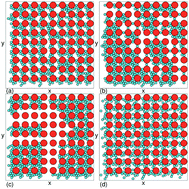Directional clogging and phase separation for disk flow through periodic and diluted obstacle arrays
Abstract
We model collective disk flow though a square array of obstacles as the flow direction is changed relative to the symmetry directions of the array. At lower disk densities there is no clogging for any driving direction, but as the disk density increases, the average disk velocity decreases and develops a drive angle dependence. For certain driving angles, the flow is reduced or drops to zero when the system forms a heterogeneous clogged state consisting of high density clogged regions coexisting with empty regions. The clogged states are fragile and can be unclogged by changing the driving angle. For large obstacle sizes, we find a uniform clogged state that is distinct from the collective clogging regime. Within the clogged phases, depinning transitions can occur as a function of increasing driving force, with intermittent motion appearing just above the depinning threshold. The clogging is robust against the random removal or dilution of the obstacle sites, and the disks are able to form system-spanning clogged clusters even under increasing dilution. If the dilution becomes too large, however, the clogging behavior is lost.



 Please wait while we load your content...
Please wait while we load your content...
